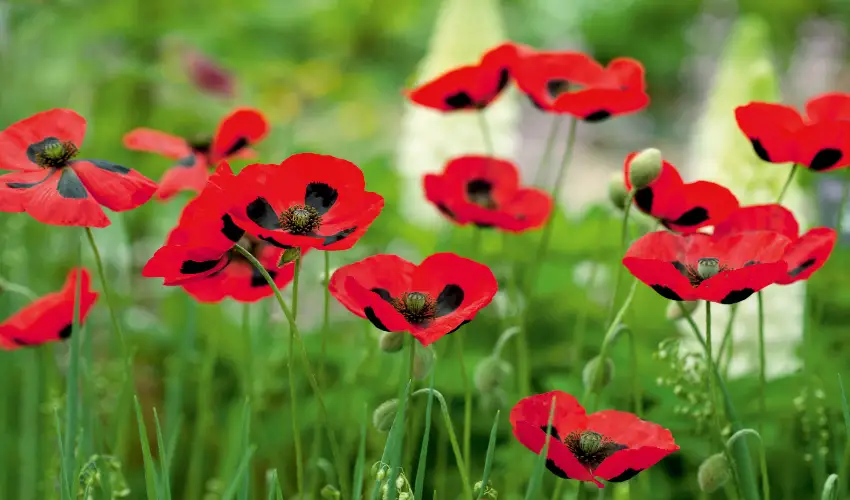Introduction
Drying poppy flowers can be a fulfilling way to preserve their beauty and incorporate them into long-lasting decorative pieces. With their delicate petals and unique seed pods, poppies need special care to maintain their vibrant color and structure. Below are some of the best practices to ensure successful drying of poppy flower for sale.
- Choose the Right Time to Harvest
- Ideal Bloom Stage: Harvest poppies when they are just fully bloomed but not too mature. Flowers that are either too young or too old may not dry well.
- Time of Day: Pick the flowers in the late morning after the dew has evaporated but before the afternoon sun wilts them.
- Weather Considerations: Dry, sunny days are optimal for harvesting as wet flowers can lead to mold during the drying process.
- Use the Proper Drying Method
- Air-Drying: This traditional method is perfect for preserving poppies’ natural shape.
- How To Do It: Hang the poppy flowers upside down in a cool, dark, and dry room.
- Spacing: Ensure the flowers are spaced out properly to allow for air circulation and prevent mold.
- Silica Gel Drying: For a quicker and more detailed preservation.
- Step-by-Step Guide: Place poppies in a container filled with silica gel and cover them completely. Seal and leave for 5–7 days.
- Press-Drying: Ideal for creating flat decorative pieces.
- Instructions: Place flowers between sheets of parchment paper and place a heavy book or press on top. Leave for 1–2 weeks.
- Handle Flowers with Care
- Gentle Handling: Poppy petals are thin and prone to tearing. Use light pressure when arranging them for drying.
- Pre-Treatment: Lightly misting petals with hairspray can help them maintain their shape during drying.
- Control the Environment
- Temperature and Humidity: A space with low humidity (below 50%) and moderate temperature (around 60–70°F) is ideal.
- Darkness: Keeping poppies away from direct sunlight helps retain their color.
- Ventilation: Ensure proper airflow to prevent fungal growth.
- Preserve the Color
- Using Absorbents: Silica gel helps preserve vibrant colors better than air-drying alone.
- Natural Color Enhancers: A mild salt solution applied to the petals before drying can help maintain a more vivid hue.
- Common Mistakes to Avoid
- Overcrowding: Drying too many flowers in one area can lead to mold and incomplete drying.
- Using Wet Flowers: Always ensure that flowers are completely dry before starting the preservation process.
- Exposing to Light: Even post-drying, direct sunlight can bleach out the color, so keep finished pieces in shaded areas.
- Final Steps: Sealing and Display
- Seal the Dried Flowers: Use a light layer of clear spray or craft sealant to protect the flowers from dust and moisture.
- Displaying: Place the dried poppies in a shadow box, use them in wreaths, or incorporate them into pressed flower art for best results.
Conclusion
Drying poppy flowers successfully requires attention to detail and an understanding of their delicate nature. By following these tips, you can enjoy beautifully preserved flowers that maintain their charm for years to come.
